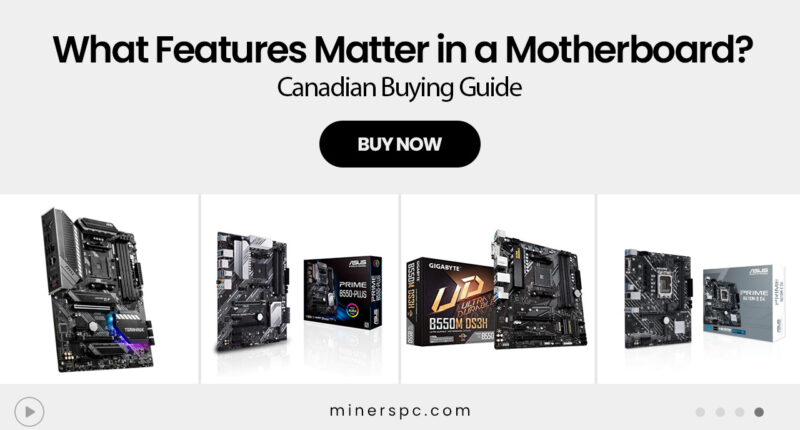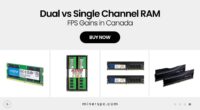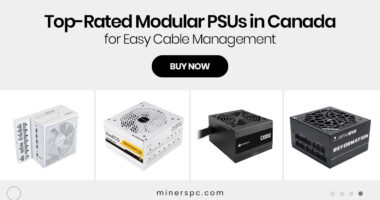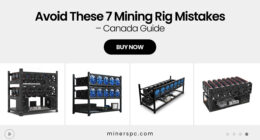When building or upgrading a PC in Canada, the motherboard often gets overlooked in favour of flashier components like GPUs or CPUs. But make no mistake—your motherboard is the foundation of your entire build. It dictates everything from compatibility to connectivity and long-term upgrade potential. Whether you’re gaming in Alberta, editing 4K footage in Toronto, or programming in Vancouver, choosing the right motherboard is a decision that directly impacts your system’s stability, performance, and lifespan.
This guide breaks down the features that matter most, with real-world insights and trusted recommendations to help Canadian buyers make confident choices.
Why the Motherboard Is So Important
Think of the motherboard as your PC’s central nervous system. It connects your CPU, GPU, RAM, storage, and all your peripherals—and ensures they all work in harmony. A poorly chosen board can limit your system’s capabilities, bottleneck performance, or restrict future upgrades.
If you’ve ever tried adding an M.2 drive only to find your board lacks a second slot, or attempted to install faster RAM your board doesn’t support, you’ve felt the pain of cutting corners on this critical component.
Form Factor: The First Decision
The form factor dictates not only the size of the motherboard but also the number of features it can host.
- ATX boards like the ASUS Prime B550-PLUS are full-sized and ideal for builds with multiple GPUs, storage devices, and expansion cards.
- Micro ATX boards like the ASRock B450M Steel Legend or GIGABYTE B760M D3HP offer a balance between compact size and connectivity.
- Mini ITX is perfect for compact PCs, but you’ll trade off ports and expansion slots.
Expert Tip: If you’re planning a small form factor build for a condo or dorm room, make sure your case supports the chosen motherboard size before buying.
CPU Compatibility and Chipset
Your choice of motherboard must match your CPU’s socket and generation.
- Intel 12th/13th/14th Gen CPUs require LGA 1700 sockets. Boards like the ASUS TUF Gaming B760M-PLUS WiFi or ASUS Prime H610M-E D4 are solid choices depending on your needs and budget.
- AMD Ryzen (3rd Gen and up) needs AM4 sockets. The MSI MAG B550 Tomahawk and ASUS TUF Gaming B550-PLUS WiFi II offer top-tier performance for gamers and creators alike.
Beyond the socket, the chipset determines what features your board supports—like PCIe 4.0, overclocking, or multiple GPUs. For example, B550 chipsets support PCIe 4.0, while B450 boards like the ASUS ROG Strix B450-F Gaming II are better suited to budget builds.
RAM Support and Speed
Modern games, creative workloads, and development tools are memory-hungry. Your motherboard must not only support enough RAM, but also the right speeds and types.
Boards like the GIGABYTE B550M DS3H or MSI ProSeries B450M PRO-M2 Max support DDR4 and up to 128GB on higher-end configurations. If you’re investing in DDR5 memory, make sure your board supports it—such as the GIGABYTE B760M D3HP, which is built for next-gen performance with DDR5 speeds up to 5600MHz.
User Scenario: A Toronto-based video editor recently upgraded to a DDR5-capable board and saw major performance gains when rendering in Adobe Premiere Pro—shaving off minutes per project.
Storage Options: SATA, M.2, and NVMe
Fast storage equals fast load times—and motherboards now offer multiple ways to get your system screaming.
- M.2 Slots are a must-have in 2025. Look for boards with at least two, like the ASUS TUF Gaming B760M-PLUS WiFi or MSI MAG B550 Tomahawk, for flexibility between boot drives and large game libraries.
- PCIe 4.0 support boosts SSD speeds dramatically—perfect for creators and gamers who value quick access to large files.
- Legacy SATA ports still matter if you’re using older HDDs or SATA SSDs.
Expert Tip: NVMe SSDs installed in M.2 slots can get hot—consider boards with thermal shielding or heatsinks for improved longevity.
Expansion Slots and PCIe Support
If you plan to add a graphics card, capture card, or network card, you’ll need the right PCIe slots.
- Full-sized ATX boards like the ASUS TUF Gaming B550-PLUS WiFi II give you multiple PCIe x16 and x1 slots.
- Micro ATX boards like the ASRock B450M Steel Legend still offer respectable expandability in a smaller footprint.
Look for PCIe 4.0 or even PCIe 5.0 support for future-proofing. The ASUS TUF Gaming B760M-PLUS WiFi already includes PCIe 5.0, ensuring it’s ready for upcoming GPUs and SSDs.
Connectivity: USB, Networking, and Wi-Fi
No one likes running out of ports or dealing with sluggish Wi-Fi.
- Boards like the ASUS Prime H610M-E D4 offer a balanced set of USB 3.2, HDMI, DisplayPort, and legacy ports for basic builds.
- For faster networking, the ASUS TUF Gaming B760M-PLUS WiFi and ASUS TUF Gaming B550-PLUS WiFi II come with 2.5Gb Ethernet and integrated Wi-Fi 6.
Creators working with cloud platforms or streamers uploading large files will appreciate the speed boosts from modern LAN and wireless features.
BIOS and Future-Proofing
A solid BIOS experience makes everything from troubleshooting to overclocking easier. Features like BIOS FlashBack—available on the ASUS ROG Strix B450-F Gaming II—allow you to update the BIOS without a CPU installed, which is a game-changer for first-time builders.
Personal Perspective: When building a PC for my brother in Montreal last winter, we needed to update the BIOS to support a newer Ryzen chip. The BIOS FlashBack button saved us hours—and a trip to the store.
Design, Durability, and Aesthetics
While performance reigns supreme, don’t ignore build quality or aesthetics.
Boards like the ASRock B450M Steel Legend or ASUS Prime B550-PLUS feature reinforced PCIe slots, high-quality capacitors, and eye-catching RGB support for clean, reliable, and stylish setups.
If your PC will be visible (through a tempered glass side panel, for instance), look for motherboards with clean PCB layouts and customizable lighting.
Final Thoughts
Choosing the right motherboard means understanding your goals—are you building a powerful gaming rig, a creator workstation, or a home office PC? Once your needs are clear, it’s about selecting a board that delivers compatibility, performance, and future-proofing.
Whether you’re after blazing-fast connectivity, reliable overclocking support, or budget-friendly versatility, there’s a quality motherboard waiting for you.
Looking for the perfect pick? Explore the top recommendations below while they’re still available – these won’t stay in stock for long.
















![Best Prebuilt PCs in Canada for Work, School & Gaming [2025 Guide]](https://www.minerspc.com/wp-content/uploads/2025/07/best-prebuilt-pcs-in-canada-for-work-school-gaming-2025-guide-260x140.jpg)


